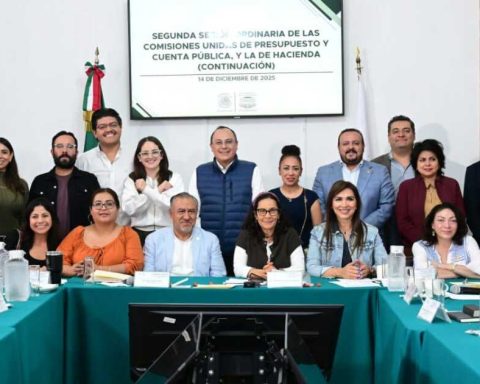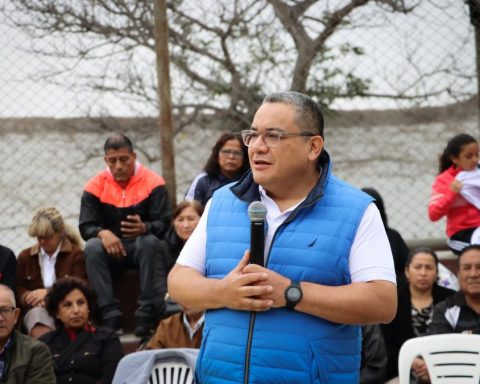As if calling the list, the World Bank listened in Bogotá to designated officials of the incoming government: its Vice President for Latin America and the Caribbean, the Colombian Carlos Felipe Jaramillo, he met with the future Minister of Finance, José Antonio Ocampo; with that of Education, Alejandro Gaviria, and with some advisers. With the next Minister of Agriculture, Cecilia López, who is recovering from covid-19, he spoke by phone.
(Read: Doubts about the effect of consumption in the tax on sugary drinks).
Since the campaign, the president-elect, Gustavo Petro, has expressed his desire to build confidence in Washington’s institutions. “I made a commitment – he said, for example, in an interview with EL TIEMPO – before the IMF to reduce the deficit”.
Thus, after talks with officials already designated, Jaramillo and Petro discussed efforts against deforestation, development of renewable energy, comprehensive rural reform and multipurpose cadastre, as well as improving access and quality of basic education in areas with more poverty.
Jaramillo spoke about the vision of Colombia, from the World Bank.
In addition to the programs that are already underway, what other topics have you dealt with?
The World Bank has been pointing out that a more structural tax reform is important for Colombia because there are major shortcomings and, in addition, the presentation of tax reforms has been too frequent to solve problems at the moment. There is a certain harmony with the incoming government. And another area is that the mission of the World Bank is to help countries eliminate poverty. We see that there are opportunities to give more assistance to the most excluded populations, and we also see a coincidence with some of the approaches.
What would the needed reform look like?
Carlos Felipe Jaramillo, who assumes as Vice President of the World Bank for Latin America and the Caribbean.
What would make the tax reform structural?
I think the fundamental thing is that it is not a patchwork quilt, but something well founded and well structured. Multiple studies, including those of the World Bank, that of the commission of fiscal wise men, have concluded that Colombia is far behind in terms of the proportion of collection that comes from the payment of income tax and especially from natural persons. An important structural change is to rebalance so that Colombia has a more modern structure. The second structural issue is that in Colombia the Tax Statute still has clauses that facilitate tax evasion.
So, the largest payment should come from individuals, not companies.
In agreement. It is more expeditious to remove the tax from companies, which is what Colombia has done. But many of the profits of the companies end up reaching the natural persons, the owners of the companies, so technically it is better.
Beyond rent, what other changes do you see?
There is a lot of debate about 4 per 1,000, which has its pluses and minuses. We have been concerned about the impact it has on the increase in the cost of financial services. It would be ideal if it could be dismantled, perhaps gradually, because it cannot be done from one day to the next.
Would increasing collection also be part of a structural reform?
Yes, because in Colombia the collection is below what one would expect for a country of its income: 15 percent of GDP for a country the size of Colombia is low.
Would the reform serve to lower inequality?
We know well that Colombia is a society with one of the highest inequality indices in the entire region, and fiscal policy has contributed to preserving that. So, on both the spending side and the revenue side, it is important to make fiscal policy more progressive. In this we have many recommendations and we hope that the next government looks favorably on some of these issues.
(Also: The three key issues of the Petro government in its relationship with the US).
Where else can progress be made in equity?
One element is to change the social protection system; help reform it; make spending better targeted. There are expenses that are going away, for example, in subsidies to public services for people who do not need them. That should be reformed.
The sustained recovery in Colombia
The World Bank and other analysts improve Colombia’s forecasts while lowering those of the world. Why?
Colombia is a rather sui generis case. This year is possibly going to be the region’s economy with the best performance. There are very specific factors of its structure, of the policies adopted, some very favorable and that have greatly stimulated production. Employment has been going up quite a bit. It is one of the strongest and longest post-pandemic recoveries we have seen in the world. A good number of these policies are to be congratulated. So this year is a good year. The increase in the price of oil has been positive, and the price of coal has been very good. Even the coffee has been high. The terms of trade for Colombia have been positive.
And will it continue like this?
There are clouds. 2023 worries us much more. For the region 2022 is already a bad year. The region will grow an average of 2.5 percent. That is why Colombia stands out a lot. But the impact of the deterioration in the external environment is already being seen. That of the –practically already– recession in Europe; China is still very slow and it is not seen that it is going to get out of the mess it has quickly.
And the United States is beginning its slowdown phase. And, related to that, the interest rates of the Federal Reserve and other central banks, which are already rising and are beginning to reach levels that are beginning to slow down economic activity in the great demand markets for Latin American products. We have seen this reflected very recently, on the one hand, in the prices of products that respond very well to those expectations of external demand.
In 2023, the growth rate will be much lower in Colombia. It will have to face higher financing costs in foreign markets, foreign demand at very low levels. Colombia maintains a very positive reputation for its macroeconomic management and I believe that the incoming government is going to maintain that good macroeconomic management.
And what are the ingredients of good macroeconomic management?
The first, the level of debt, which in the region increased. Due to the pandemic, countries had to go out to respond and help their population. But he left us a higher debt. Now that there is a good recovery, we must take advantage of the momentum to start lowering that level of debt. Colombia has had such a good recovery that debt as a proportion of GDP has been falling much faster than projections. Colombia, as we well know, lost investment grade and in order to regain it, and for its external financing costs to drop, it would be very important to maintain this path of debt consolidation and, moreover, mainly, to once again have the capacity to respond . There are always going to be external shocks, and it is good to be prepared.
This, in terms of tax. And as for money?
The other chapter is to keep inflation low and stable. All countries in the region are experiencing a significant rise in inflation for the first time in a long time. Colombia is not the exception. They are reaching levels, almost all of them, double digits. To the United States and European countries. But good macroeconomic management indicates that measures must be taken so that it does not become a chronic phenomenon, and for this it is important that central banks manage expectations and take the necessary measures.
But we predict that for next year there will already be a significant reduction in inflation levels because in most of the countries of the region macroeconomic management has improved a lot in the last two decades. There are central banks that are increasingly serious, increasingly independent.
As soon as the United States began to raise interest rates, talk of a possible recession began. In Colombia, the Banco de la República began to raise its rates much earlier, and there is no talk of a recession. On the contrary, growth accelerated. Why that difference?
This reflects very large differences between the structures of the economies. The phenomenon in the United States is similar to that in Colombia in that the labor market and economic activity are doing well despite the rise in rates. Unemployment in the United States has been at an all-time low for three or four months. The employment indicators in Colombia are doing very well, practically all the employment that was lost due to the pandemic has been recovered.
But the feeling I have is that in the United States there are more medium- and long-term financial instruments. People are already thinking about 2023, so US stocks have had a very big drop, because they are thinking about profits in the next 6-12 months, and they see that a recession or something similar is coming. Here in Colombia we are still in a very positive year. And although we do not have those highly developed instruments of the financial markets that indicate that concern, speaking with businessmen, they are concerned about 2023.
(Keep reading: The main points of the Petro tax, according to its Minhacienda).
In good macroeconomic management, how do new planned expenses fit in, for example, to give half the minimum wage to all non-pensioners or for the government to employ the unemployed?
We give more importance to the issue of equity, targeting and good use of public spending, so that it reaches the most needy families with more intensity. Developed countries can think of programs that give transfers to the entire population. In Latin America we are not yet reaching those levels of development, and we have to focus on how to use the resources we have well and how to use them more productively, and attack equity problems.
MAURICIO GALINDO – EDITOR OF ECONOMICS OF THE TIME

















